calsfoundation@cals.org
Shiloh Museum of Ozark History
The Shiloh Museum of Ozark History in Springdale (Washington and Benton counties) serves the public by providing resources for finding meaning, enjoyment, and inspiration in the exploration of the Arkansas Ozarks. The museum takes its name from the pioneer community of Shiloh, which became Springdale in the 1870s.
In 1881, a five-year-old Nebraska boy named Guy Howard found an arrowhead in the family garden, sparking an interest in Native American lore that would last a lifetime. The Howard family moved from Nebraska to Springdale by covered wagon in the 1890s, and Guy Howard soon discovered that the Ozarks were full of American Indian artifacts. His collection grew and grew. By the 1920s, local people were flocking to the Howard home to see Guy Howard’s “museum.” Howard supported his hobby by practicing law. Through the years, he served as Springdale city attorney, mayor, and municipal judge.
In the early 1960s, Howard needed retirement money and decided to sell his collection. City officials did not want to see the artifacts leave Springdale, and in 1966, the Springdale City Council voted to purchase the huge collection, which contained some 10,000 prehistoric and historic artifacts and 260 books and pamphlets on anthropology and archaeology. The collection was moved into a building vacated by the city. After months of preparation by Northwest Arkansas Archeological Society volunteers and curator Linda Allen, the Shiloh Museum of Springdale opened its doors on September 7, 1968, with exhibits featuring artifacts from Howard’s collection, medical instruments used by local physicians, and a research library.
The museum slowly grew through the 1970s. In 1980, Bob Besom, the museum’s first full-time professional director, was hired. Seven federal grants during the 1980s were of major help to the museum. One special program funded by federal grants was the Vanishing Northwest Arkansas photo collection project. Mary D. Parsons, the museum’s assistant director, was instrumental in the creation and oversight of this project. By 1993, over 100,000 images had been collected, and as a result, the museum earned an Award of Merit from the American Association for State and Local History. In the 1980s, four historical buildings (the 1854 Ritter McDonald Cabin, an 1870s general store, an 1870s country doctor’s office, and a 1930s outhouse) were moved onto the museum campus, complementing an 1870s home (remodeled in 1938) already on the property. All the buildings are open to the public and used for museum interpretive programs.
In 1991, the museum moved into a new 22,000-square-foot building. In 1993, the board changed the name to “Shiloh Museum of Ozark History” in order to define more clearly the museum’s scope. The museum’s board of trustees established an endowment fund in 1992 to ensure the long-term financial stability of the museum. In 1995, a 1930s barn was moved onto the site. The latest addition to the museum campus is the historic Shiloh Meeting Hall. Built in 1871 as a church and community building, the hall was purchased by the New Era Lodge No. 36 of the Independent Order of Odd Fellows in 1935; they donated the building to the museum in 2005.
Besom retired in 2005, and Allyn Lord was hired as the new director. Lord is the former assistant director of the Rogers Historical Museum and, before that, was registrar at the University of Arkansas Museum.
The city of Springdale is the museum’s main source of financial support, but approximately two-thirds of the members, visitors, and participants in programs live outside Springdale. The museum reaches out to other cities and counties through its collection policy, exhibits, programs, research facilities, and local events such as Pettigrew Day (an old-fashioned homecoming in southern Madison County) and the Tontitown Polenta Smear (a celebration of the town’s Italian heritage).
For additional information:
Benson, Martha L., and Laura Lyon Redford. Ozark Coverlets: The Shiloh Museum of Ozark History Collection. Springdale, AR: Shiloh Museum of Ozark History, 2015.
History of Washington County, Arkansas. Springdale, AR: Shiloh Museum, 1989.
Parks, Michelle. “Show and Tell.” Arkansas Democrat-Gazette. January 30, 2007, pp. 1E, 6E.
Shiloh Museum of Ozark History Scrapbooks. Shiloh Museum of Ozark History, Springdale, Arkansas.
Shiloh Museum of Ozark History. http://www.shilohmuseum.org/ (accessed August 10, 2023).
Susan Young
Shiloh Museum of Ozark History


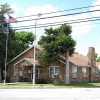
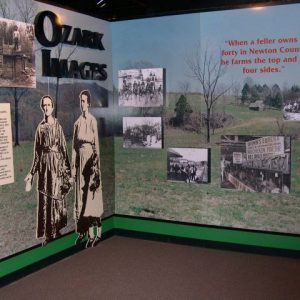 Shiloh Museum of Ozark History Exhibit
Shiloh Museum of Ozark History Exhibit 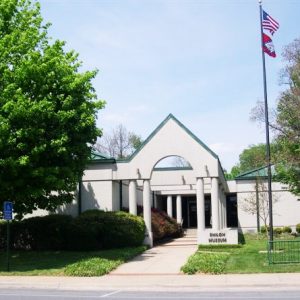 Shiloh Museum of Ozark History
Shiloh Museum of Ozark History 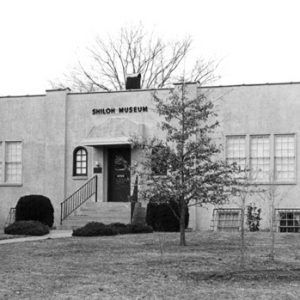 Shiloh Museum of Ozark History
Shiloh Museum of Ozark History 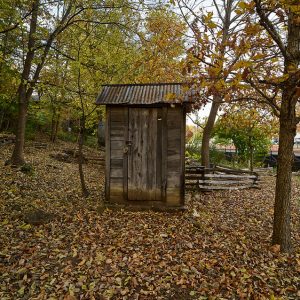 Shiloh Privy
Shiloh Privy 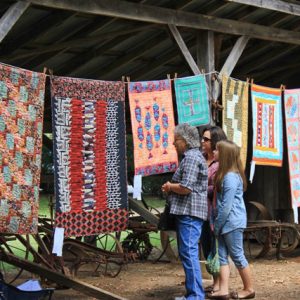 Shiloh Quilt Fair
Shiloh Quilt Fair 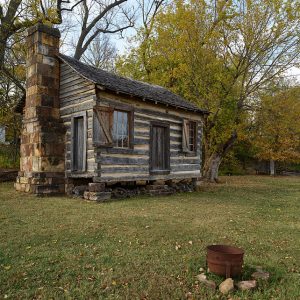 Vintage Cabin
Vintage Cabin 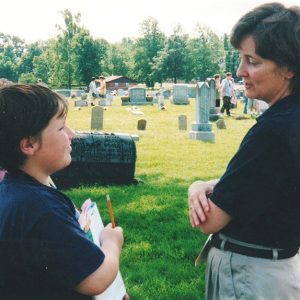 Susan Young
Susan Young 



I was born in Pettigrew, AR, Nov. 1929. I went to school at Pettigrew school where I walked two miles each way. My granddad Minks was the blacksmith in Pettigrew and had a general store. My granddad Patrick, also from Pettigrew, homesteaded on a mountain the opposite side of Pettigrew. My moms mother died when Mom was five years old. Her dad abandoned her, her sister, and her little brother. The older sister took Mom and her little brother about three miles where an old couple lived. They lived on bugs and grasshoppers until the old couple took them in. Her dad finally came back and claimed his kids. I lived later in a house owned by Bob Newman and went to Muddy Gap school, where I walked about three miles. My bed was a mattress cover filled with straw and corn shucks. Water was from a very small coalmine that had been abandoned. My family moved to Otis, KS, in 1941 then to Anderson, MO, in 1942. Joined the navy at age 16 where I served seven years and served on five ships during the Korean War.